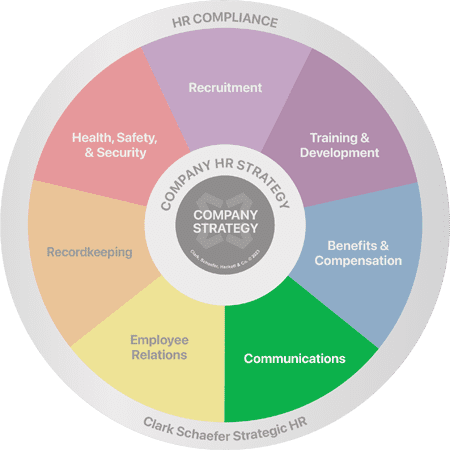Creating A Communications Plan
Last Updated on November 2, 2022 / Communications
Question:
What should go into a communications plan and why do we need one?
Answer:
Although it may seem like a daunting task, a well-defined communications plan is definitely worth the effort. A written communications plan will give your day-to-day work a focus, help set priorities, provide a sense of order and control, protect against last-minute demands, and, quite simply, provide peace of mind.
What Is a Communications Plan? A communications plan puts in writing your objectives, audiences, timetable, tools, budget and evaluation and covers all communications including written, spoken, and electronic interactions with your audiences. While it is a ‘living’ document and subject to updates, the best time to develop your overall plan is while preparing your annual budgeting or during your organizational planning process.
How to Develop the Plan? Consider getting information for your plan from your mission statement, a communication audit (see below), customer surveys and focus groups, input from advisors and consultants, and discussions with employees. Once your data is assembled you can start writing your plan; be sure to include the following:
- Audit: Conduct a research-communications audit evaluating your current communications. Determine what communication activity every employee is doing, what each is designed to achieve, and the effectiveness of each activity.
- Objectives: Based on your audit, define your overall objectives, such as: centralization of communication efforts, visibility for the company, increased employee teamwork, improved employee retention and recruitment, etc.
- Audience: List all the audiences that your company might want to contact, attempt to influence, or serve (i.e., customers, non-customers, competitors, subcontractors, employees, prospective employees, federal, regional, and local governments, the media, etc.).
- Tools: Decide what tools will be used to accomplish the stated goals.
- Costs: In order to select among the options available, develop cost estimates for each approach.
- Timetable: Establish a timetable by separating objectives into logical time periods (quarterly, monthly, weekly, etc.).
- Measurement: Build into your plan a method for measuring results.
Developing a written communications plan will take effort; however, once in place, the written plan will bring a semblance of order to what can often be a chaotic task and makes future adjustments and strategies much easier to implement.
Communication often seems like a “no-brainer”. You have something to communicate and you just “do it”. But factor in multiple audiences, a multitude of media and many channels for providing and sharing information and you quickly learn that providing targeted communication in today’s world isn’t so easy. Strategic HR has years of experience writing for a diverse audience; we even have a marketing/communications specialist on staff. Visit our Communications page to learn how we can assist you with various communication-based projects.



